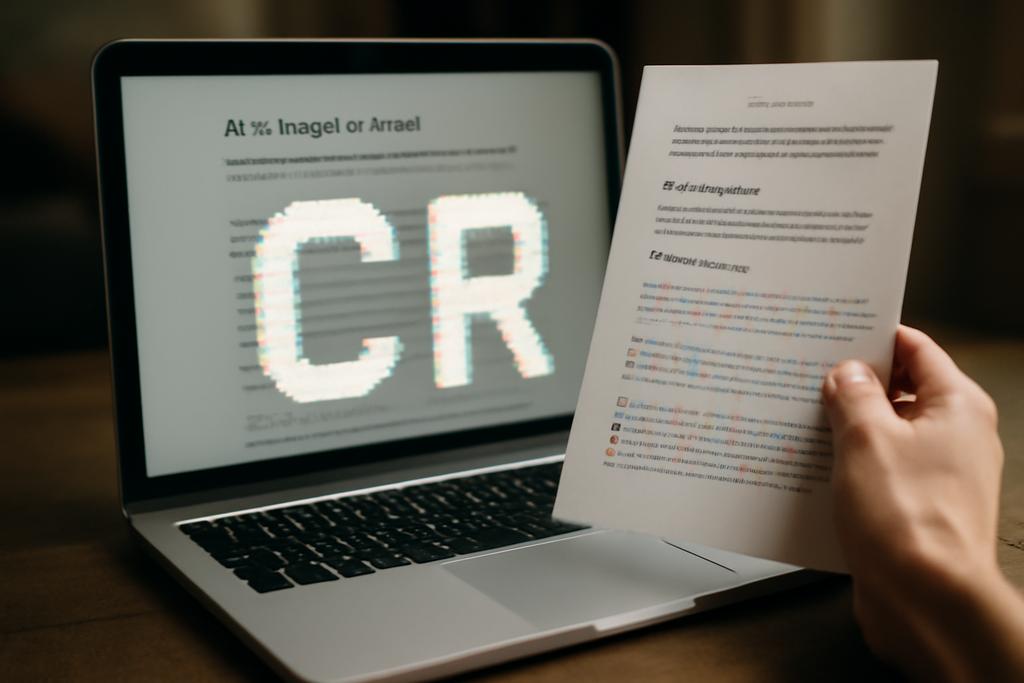The Challenge of Reading the World
Optical Character Recognition (OCR) — the technology that lets computers “read” text from images — works brilliantly for languages like English. Think about Google Lens effortlessly translating a menu in a foreign country, or how easily you can digitize a scanned document. But what about languages with unique, less-studied scripts? For millions who speak languages like Sinhala and Tamil, the digital revolution hasn’t fully arrived. These languages, along with many others, are considered “low-resource languages” because they lack the massive digital datasets that train sophisticated AI models. This makes OCR for these languages a significant challenge.
A Comparative Study Unearths Surprises
Researchers at the University of Moratuwa in Sri Lanka, led by Nevidu Jayatilleke and Nisansa de Silva, tackled this problem head-on. Their study directly compares the performance of six different OCR engines on Sinhala and Tamil, using both commercial (like Google’s Cloud Vision API and Document AI) and open-source (including Surya, Tesseract, EasyOCR, and Subasa OCR) systems. The results were surprising.
The Unexpected Winner: Surya
For Sinhala, the open-source system Surya blew the competition out of the water. It achieved a remarkably low word error rate (WER) of just 2.61%, far exceeding the performance of even the fine-tuned, commercial systems. This demonstrates that with clever algorithm design, even open-source tools can surpass the giants in specific niche applications.
The success of Surya isn’t just about technical prowess. It showcases the power of targeted development. While commercial systems are designed for broad application, Surya’s creators focused their efforts specifically on the complexities of the Sinhala script, resulting in exceptional accuracy.
Tamil’s Tougher Text
The story for Tamil was slightly different. Here, Google’s Document AI emerged as the top performer. Although its WER of 11.98% still pales in comparison to Surya’s Sinhala results, this is an important finding in its own right. The fact that a commercial system excelled in this instance highlights the significant resources and data these commercial solutions bring to the task. But the researchers did not stop there.
A Novel Dataset: Filling the Data Gap
One of the most significant contributions of this study was the creation of a new synthetic Tamil OCR dataset. The researchers painstakingly collected data, processed it, and created a resource that will undoubtedly benefit the entire field. By building a synthetic dataset and then testing it, the researchers have provided a valuable tool for future improvements in Tamil OCR. This underscores the need for more robust datasets to help bridge the digital divide for low-resource languages.
Beyond Accuracy: The Nuances of Language
The researchers didn’t just look at raw accuracy. They employed a range of metrics, including character error rate (CER), BLEU score, ANLS, and METEOR—each offering a unique perspective on how well the systems understood the nuances of each language. For example, Document AI scored highly in character accuracy for Tamil but not as well on word accuracy, suggesting that while it could identify individual characters, it struggled to assemble them correctly into words due to spacing and contextual understanding.
The Implications: Bridging the Digital Divide
The implications of this study reach far beyond the technical details. The ability to accurately process text from low-resource languages is critical for unlocking access to information and technology for millions around the world. Accurate OCR opens doors to digital education, healthcare information, financial services, and governmental services. It’s a bridge to a more equitable future.
Open-Source Triumphs, Commercial Strength
This research reveals the dynamic interplay between open-source and commercial approaches. While commercial systems possess the advantage of vast resources and data, specialized open-source projects, like Surya, can achieve impressive results when targeted at specific linguistic challenges. This suggests a collaborative future where open-source innovation complements and pushes the boundaries of commercial endeavors.
Future Directions: From Synthetic to Real-World Data
This research serves as a powerful foundation for future work. A key limitation is the use of synthetic datasets—images with clean, clear text. The next challenge is to replicate these impressive results with real-world data—scanned documents, photographs, and even handwritten text. Real-world images are considerably messier, containing noise, blur, and variations in lighting conditions. Overcoming these challenges will require significant additional research and investment, but the potential rewards are immense.
A Call to Action
The work of Jayatilleke and de Silva is a compelling example of how focused research can yield significant improvements in technological access for underserved communities. It’s a call to action for researchers, developers, and policymakers to prioritize the development of tools and resources for low-resource languages. The future of technology is inclusive, and it relies on our commitment to bridging the digital divide.










